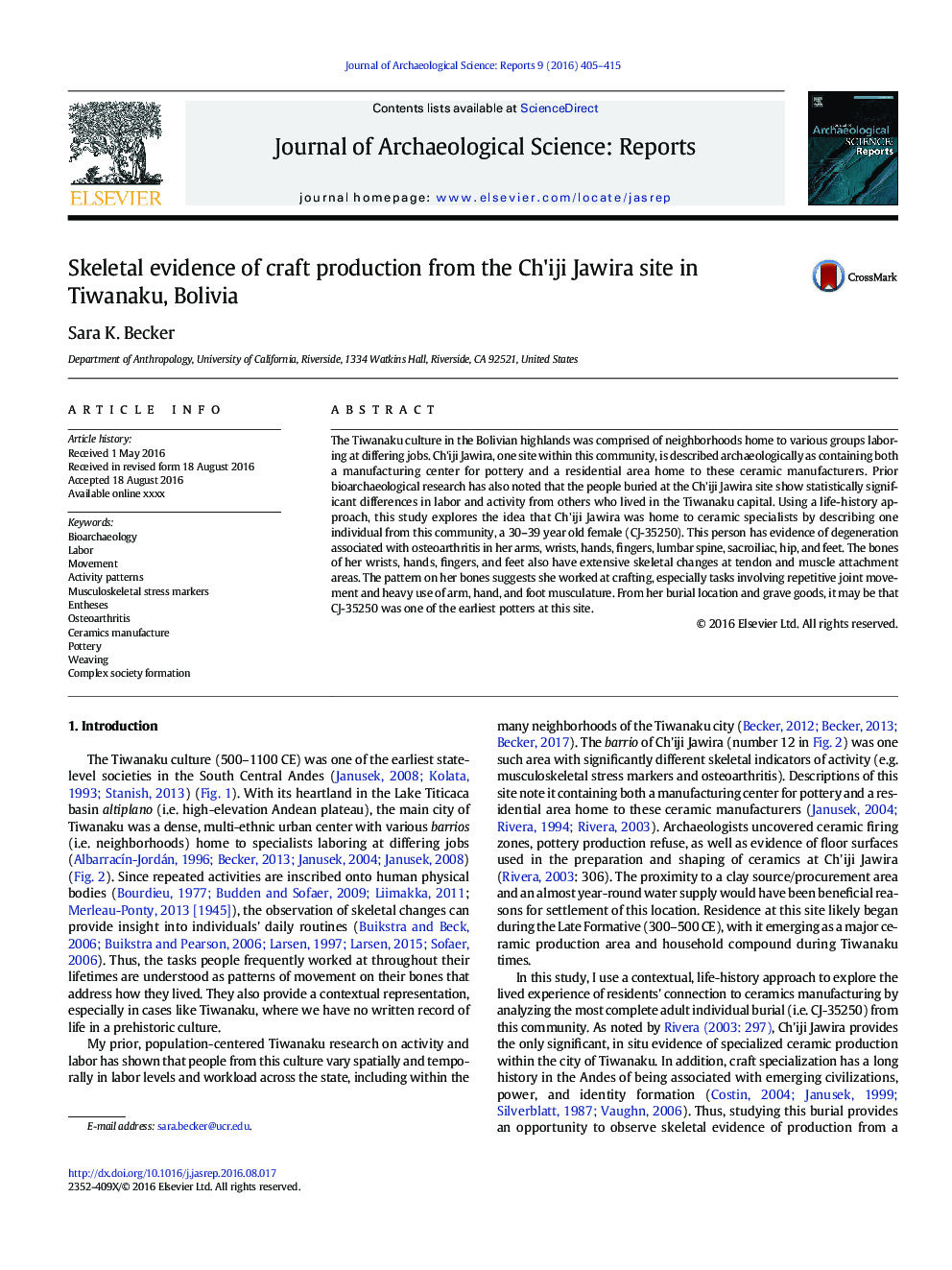| Article ID | Journal | Published Year | Pages | File Type |
|---|---|---|---|---|
| 7445949 | Journal of Archaeological Science: Reports | 2016 | 11 Pages |
Abstract
The Tiwanaku culture in the Bolivian highlands was comprised of neighborhoods home to various groups laboring at differing jobs. Ch'iji Jawira, one site within this community, is described archaeologically as containing both a manufacturing center for pottery and a residential area home to these ceramic manufacturers. Prior bioarchaeological research has also noted that the people buried at the Ch'iji Jawira site show statistically significant differences in labor and activity from others who lived in the Tiwanaku capital. Using a life-history approach, this study explores the idea that Ch'iji Jawira was home to ceramic specialists by describing one individual from this community, a 30-39Â year old female (CJ-35250). This person has evidence of degeneration associated with osteoarthritis in her arms, wrists, hands, fingers, lumbar spine, sacroiliac, hip, and feet. The bones of her wrists, hands, fingers, and feet also have extensive skeletal changes at tendon and muscle attachment areas. The pattern on her bones suggests she worked at crafting, especially tasks involving repetitive joint movement and heavy use of arm, hand, and foot musculature. From her burial location and grave goods, it may be that CJ-35250 was one of the earliest potters at this site.
Related Topics
Social Sciences and Humanities
Arts and Humanities
History
Authors
Sara K. Becker,
